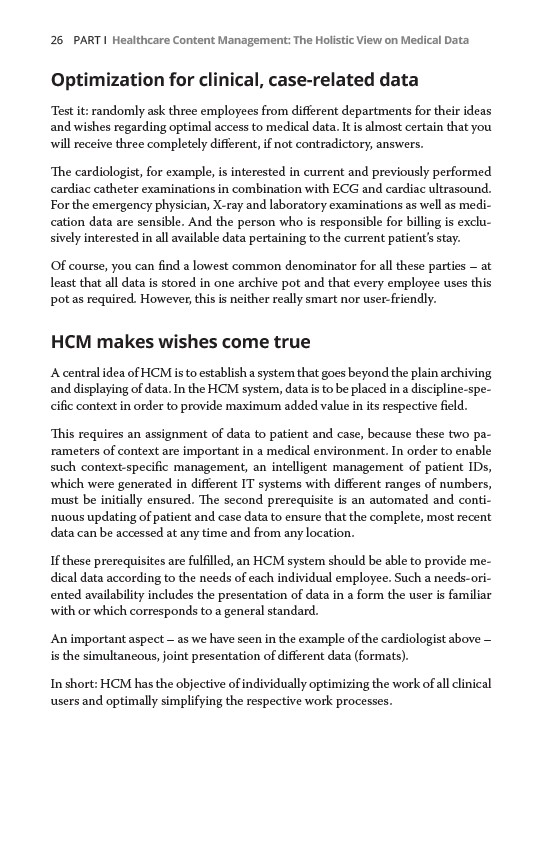
26 PART I Healthcare Content Management: The Holistic View on Medical Data
Optimization for clinical, case-related data
Test it: randomly ask three employees from different departments for their ideas
and wishes regarding optimal access to medical data. It is almost certain that you
will receive three completely different, if not contradictory, answers.
The cardiologist, for example, is interested in current and previously performed
cardiac catheter examinations in combination with ECG and cardiac ultrasound.
For the emergency physician, X-ray and laboratory examinations as well as medication
data are sensible. And the person who is responsible for billing is exclusively
interested in all available data pertaining to the current patient’s stay.
Of course, you can find a lowest common denominator for all these parties – at
least that all data is stored in one archive pot and that every employee uses this
pot as required. However, this is neither really smart nor user-friendly.
HCM makes wishes come true
A central idea of HCM is to establish a system that goes beyond the plain archiving
and displaying of data. In the HCM system, data is to be placed in a discipline-specific
context in order to provide maximum added value in its respective field.
This requires an assignment of data to patient and case, because these two parameters
of context are important in a medical environment. In order to enable
such context-specific management, an intelligent management of patient IDs,
which were generated in different IT systems with different ranges of numbers,
must be initially ensured. The second prerequisite is an automated and continuous
updating of patient and case data to ensure that the complete, most recent
data can be accessed at any time and from any location.
If these prerequisites are fulfilled, an HCM system should be able to provide medical
data according to the needs of each individual employee. Such a needs-oriented
availability includes the presentation of data in a form the user is familiar
with or which corresponds to a general standard.
An important aspect – as we have seen in the example of the cardiologist above –
is the simultaneous, joint presentation of different data (formats).
In short: HCM has the objective of individually optimizing the work of all clinical
users and optimally simplifying the respective work processes.